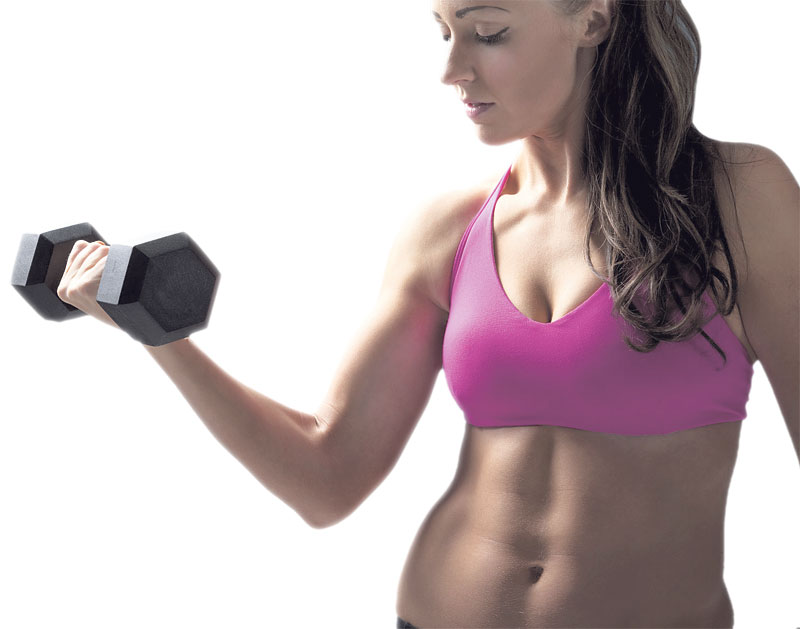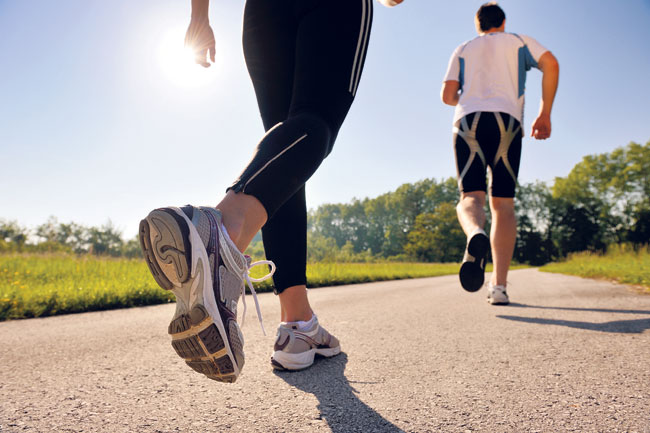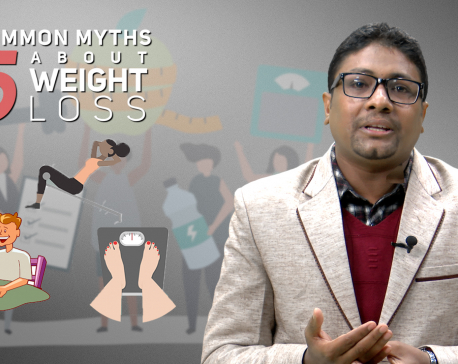
OR

Her friends and relatives often tell her that they don’t know what to feed her when they invite her for dinner. Her answer is always the same: I’ll eat anything and everything that grows in the fields and isn’t sourced from animals. Shristi Shrestha, animal rights activist, freelance writer, and fitness instructor, has been vegan for five years now and says that it isn’t a difficult lifestyle, despite what many might think, if you educate yourself and realize how your choices affect every living being. Here, she joins The Week to talk about her vegan lifestyle and how those who are interested can join her in this noble path.
Going on a fitness journey can be intimidating especially when everyone seems to have their own ideas about what’s the right way to stay fit. Then there’s the internet where you will find yourself smack-dab in the middle of such information inundation that you won’t be able to sort out fact from fiction.
The best way to prevent failure when you embark on a fitness journey is to be armed with correct information. There are a lot of training and nutrition “facts” out there that are far from the truth. So before you fall victim to another fitness myth, check out this list we have compiled for you this week.
Myth #1: Carbs are bad
Truth: If you want to gain muscle mass, you’re going to need carbs. If you take them out completely, you will burn more body fat during training perhaps, but you can’t keep it up for long. Carbs are fuel for intense workouts, fats are not. Choose a macro plan that suits your fitness goals. You also need a minimum amount of carbs to ensure that your brain functions properly. Whole carbs are unprocessed and contain the fiber found naturally in the food, while refined carbs have been processed and had the natural fiber stripped out.
Examples of whole carbs include vegetables, whole fruit, legumes, potatoes and whole grains. These foods are generally healthy and should be included in your diet.
Myth #2 Weight training turns women into men
Truth: If women aren’t supposed to have muscles, why do we have them? The definition of “manly” differs from one individual to another, but we all have a different body structure.
Some women have more feminine lines, others more androgynous. Wide hip bones and narrow shoulders are typical female shapes, but that doesn’t mean an athletic woman is less feminine. What makes athletic women bulky is more-than-average muscle mass combined with “excess” body fat. If you couple weight training with a smart diet, you will be much smaller than you would expect.
Myth #3: Doing crunches or working on an abs machine will get rid of belly fat
Truth: While an ab-crunching device might help strengthen the muscles around your midsection and improve your posture, being able to see your abdominal muscles has to do with your overall percentage of body fat. If you don’t lose the belly fat, you won’t see the abdominal muscles. Experts say that doing abs crunches can’t help you lose that belly fat. You can’t pick and choose areas where you’d like to burn fat. So crunches aren’t going to target weight loss in that area. In order to burn fat, you should create a workout that includes both cardiovascular and strength-training elements. This will decrease your overall body fat content including the area around your midsection.
You can’t “spot-reduce” fat. When you eat fatty foods, there’s no way to turn that fat into muscle. Building muscle and losing body fat are two completely different processes. You burn body fat and build muscle, but there is no way to convert one into the other. To tone those problem areas, you have to reduce your overall body fat, which means high-intensity training combined with clean eating.
Myth #4: Exercise can erase my bad eating habits
Truth: This one is pervasive and unfortunately a myth. You can’t out-exercise a crappy diet. Your eating has to be in check. About 80% of what you look like is based on diet.
It’s a calorie game, and people often overestimate the amount of food they burn in an hour-long session. Your diet has a strong influence on your health. Working out on a regular basis has many health benefits, but it can’t erase the overwhelmingly harmful effects of unhealthy foods. The most dangerous are trans-fats (aka hydrogenated oils), which are found in deep-fried fast foods and certain processed foods made with margarine or partially-hydrogenated vegetable oils. Trans-fats increase the risk of heart attacks, heart disease and strokes, plus they contribute to increased inflammation, diabetes and other health problems. Steer clear of margarine, chips, crackers, baked goods and most fast foods.
Myth #5: Doing lots of cardio is the best way to lose weight.
Truth: If your goal is weight loss, logging endless miles on the treadmill isn’t always the best approach. Yes, traditional cardio workouts will help create a day-to-day calorie deficit (in addition to a healthy diet), which is essential for losing weight. But in the long-term, since having more lean muscle mass helps your body burn more calories at rest, you will be adding to this deficit without doing a thing. A combination of both high-intensity cardio and strength training is a good idea. And don’t forget, when it comes to weight loss, having a smart nutrition plan is key.
Myth #6: Sweating a ton means you worked out hard
Truth: This is not necessarily always true. You sweat because your core temperature increases as your muscles create heat when you exercise. A tough workout will increase your internal temperature. It also has to do with the temperature you are working out in.
The humidity in the air also plays a role. It’s not sweating that cools you off, it’s the evaporation. You will feel like you are sweating more when it’s humid because sweat can’t evaporate. This is also a reason to be careful exercising in hot, humid climates, because your body temperature will keep increasing.
Myth #7: No pain, no gain
Truth: Exercise should not be painful. At the height of your workout, you should be sweating and breathing hard. You should not be so out of breath that you cannot answer a question, but should not be so comfortable that you can carry on a full conversation.
That’s how you know you are working at a good level. It’s important to distinguish between muscle fatigue and muscle/joint pain (sharp and uncomfortable pain during movement). Pain is your body’s way of telling you that you’re doing something wrong.
Listen to your body. If it’s painful, stop.

You May Like This

Debunking five common Myths about fitness
In a conversation with My City’s Aditya Neupane, famous Fitness YouTuber and the Founder of The Physique Workshop, Sushant Pradhan... Read More...

5 Common myths about weight loss (with video)
KATHMANDU, Dec 11: Are you tired of trying losing your weight but not being able to? It may be because... Read More...

Fitness experts share their fitness resolutions
Making a resolution and promising oneself to improve some aspect of you from the first day of the year is... Read More...




Just In
- Fixing a win by outlawing dissent damages democracy
- MoHP cautions docs working in govt hospitals not to work in private ones
- Over 400,000 tourists visited Mustang by road last year
- 19 hydropower projects to be showcased at investment summit
- Global oil and gold prices surge as Israel retaliates against Iran
- Sajha Yatayat cancels CEO appointment process for lack of candidates
- Govt padlocks Nepal Scouts’ property illegally occupied by NC lawmaker Deepak Khadka
- FWEAN meets with President Paudel to solicit support for women entrepreneurship







_20220508065243.jpg)





Leave A Comment